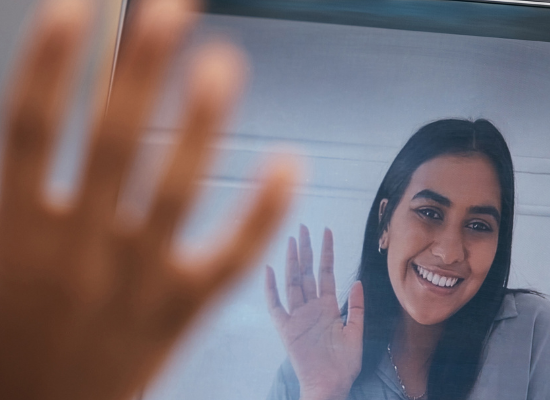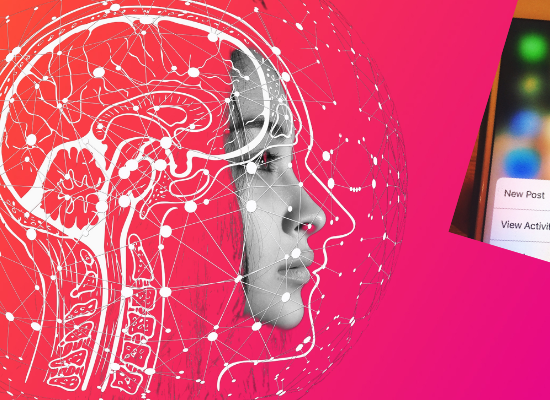
Long before the emotional toll people endured during the Covid pandemic, crisis counselors at the Response Crisis Center in Stony Brook, New York, noticed crisis callers frequently reporting feelings of being overwhelmed and alone. “We saw that even when connected with psychiatrists and therapists, 988 callers did not have the informal social supports and connections to alleviate isolation and loneliness,” says Meryl Cassidy, executive director at the Response Crisis Center.
According to Cassidy, whose center is a part of the 988 Suicide & Crisis Lifeline network, 988 contact centers often interact with familiar callers, callers who contact the line regularly. “We’ve noticed that many of those frequent callers started in a suicidal crisis and then they reached out to us for initial crisis support. Once we helped them get through their suicidal crisis, they would call regularly because they found it was easy to access and connect to someone, even when they had been engaged with community-based services.
A Nation in a Public Health Crisis
The U.S. Surgeon General’s Office noticed similar social isolation trends and started monitoring the public health impact, citing pre-pandemic research showing that approximately half of the U.S. adult population reported experiencing loneliness and disconnection. Risk factors associated with social isolation and loneliness include depression, anxiety and premature death including suicide. A 2017 study found that the mortality rate of social isolation was equivalent to smoking up to 15 cigarettes a day. The mortality risk of being socially disconnected well exceeded the risk factor levels associated with obesity and physical inactivity. In May, the U.S. Surgeon General released an advisory to address the epidemic of loneliness and isolation, with U.S. Surgeon General Dr. Vivek Murthy stating:
“Our epidemic of loneliness and isolation has been an underappreciated public health crisis that has harmed individual and societal health. Our relationships are a source of healing and well-being hiding in plain sight – one that can help us live healthier, more fulfilled, and more productive lives.”
Response Crisis Center’s Support Line Program
Witnessing the first-hand impact of social isolation and loneliness, inspired the Response Crisis Center to develop a Support Line Program in the 1980’s and invite familiar callers to join this new initiative, which provides follow-up. Cassidy described the benefits of the support line program, noting that suicide risk fluctuates over time. “It is not a steady state,” she says. “Being able to convey to a person that we care enough to check in to see that they’re okay tomorrow is huge. Once that promise is fulfilled, the person knows they can use the center as a reliable resource, and they can use any crisis hotline.” When 988 contacts have a positive experience, help-seeking behavior increases. The next time the person needs support, they are more apt to use their resources and support systems.
During these follow-up calls, the center inquires about linkages with ongoing mental health care in order to understand how people are engaged and what motivates them to participate in their care. “If our follow-up call program isn’t enough, we look deeper into what’s going on to see whether we can activate other support systems,” says Cassidy.
Based on the success of the Support Line Program for familiar crisis callers, the center expanded the service in 2008 to include high utilizers of other settings, such as hospital emergency departments. For example, one local hospital now refers people to the Support Line Program for structured telephone follow-up and monitoring following suicide attempts or an ongoing risk of suicide. In addition, people in emergent crises such as those experiencing or at risk of homelessness, a recent psychiatric episode, or domestic violence can also receive follow-up calls. This system creates a broader support network for community members by checking in regarding their ability to access resources such as shelters, food, and medical services.
With the growing success of the program, the Response Crisis Center developed a formal relationship with local hospitals, community-based organizations, and youth-based organizations that refer clients with higher levels of need. Center staff assist the client in developing a follow-up plan that is appropriate and person-centered. In addition to formal relationships, the center has become well-known in the community for providing this very valuable service.
“We have a strong philosophy throughout our array of services that follow-up support is critical,” explains Cassidy “Counselors are trained to offer follow-up to any 988 caller who has high risk of suicidal ideation but is not at imminent risk.”
The Support Line Program has varying structures depending on the needs of the caller. Familiar callers who opt-in for the follow-up program have a suicide risk assessment and safety plan, that counselors review prior to making the outbound follow-up call. This information allows crisis counselors to immediately engage in conversation from subsequent 988 interactions, such as inquiring how a specific coping strategy in their safety plan is working. For people with greater needs, the calls are often made by supervisors to enable the provision of more intensive follow-up.
The center makes outbound calls to Support Line callers (i.e., familiar callers), structured telephone follow-up (e.g., hospitals, youth agency, care management, domestic violence agency), and typical follow-up for callers with higher acuity. Staff conduct 50-60 outbound calls throughout the day. Cassidy shares that it’s challenging for people to find the help they need. “Often, they call the crisis line after they’ve called many other locations and have been unsuccessful.” Crises happen outside of regular business hours —sometimes people can’t get into a shelter, there are bureaucratic paperwork barriers, or they have a substance use issue so can’t get into a mental health clinic. Due to the frequent hurdles 988 contacts face, the center has become a caring support system that helps people navigate a barrier-filled and complicated system.
Follow-up care was initially integrated into the Response Crisis Center’s services although follow-up services were previously a separate SAMHSA grant program. In 2010 SAMHSA awarded funding to the first cohort of six Lifeline crisis contact centers to provide follow-up services for three years. Since the first initial SAMHSA follow-up grants, the program expanded to ten Lifeline contact centers this year totaling $5 million. Vibrant Emotional Health, administrator of the 988 Suicide & Crisis Lifeline, also recognized the benefits of follow-up for 988 contacts and declared it a clinical best practice standard for the entire Lifeline system.
Formal partnerships for follow-up each have a different funding mechanism. For example, care management organizations have an MOU that says how many people the center will serve and are paid for that number, hospitals are grant funded, and the youth agency is funded under a county contract to work with at-risk youth. Funding for their contract with a domestic violence organization will be volume-based. This financing patchwork approach helps supplement the center’s basic funding and allows them to devote more resources to follow-up.
Follow-up calls have proved to be very important for self-care. The staff gain reassurance knowing that the 988 contact will be contacted to see how they are doing. Cassidy highlights that this has benefited their retention and reduced burnout.
The Support Line Program has also decreased operational burdens by improving workflow processes. The commitment to follow-up made it possible for the center to increase their answer rates to approximately 95% because the extra support helped stabilize familiar callers by providing additional support and adjusting safety plan strategies and coping skills, resulting in fewer familiar callers. “If the right processes are not in place, follow-up can be viewed as a burden,” says Cassidy. “Using our technology and supervisory system, it is very manageable. Staff track who opted in for follow-up, and the shift supervisor determines how many outbound calls need to be completed and determines coverage.”
Nili Ezekiel is a technical assistant and research associate at the National Association of State Mental Health Program Directors (NASMHPD), providing customized technical assistance, conducting research, and developing materials on a range of behavioral health topics.
Christine Malik, MSW, is the project director for the National Association of State Mental Health Program Directors (NASMHPD). She oversees and manages several federally sponsored contracts related to suicide prevention, crisis services, 988 implementation, clinical care delivery systems, and older adult behavioral health.
This article is reported and written in collaboration with the National Association of State Mental Health Program Directors (NASMHPD) and Vibrant Emotional Health—the nonprofit that operates the SAMHSA-funded 988 Suicide & Crisis Lifeline.








